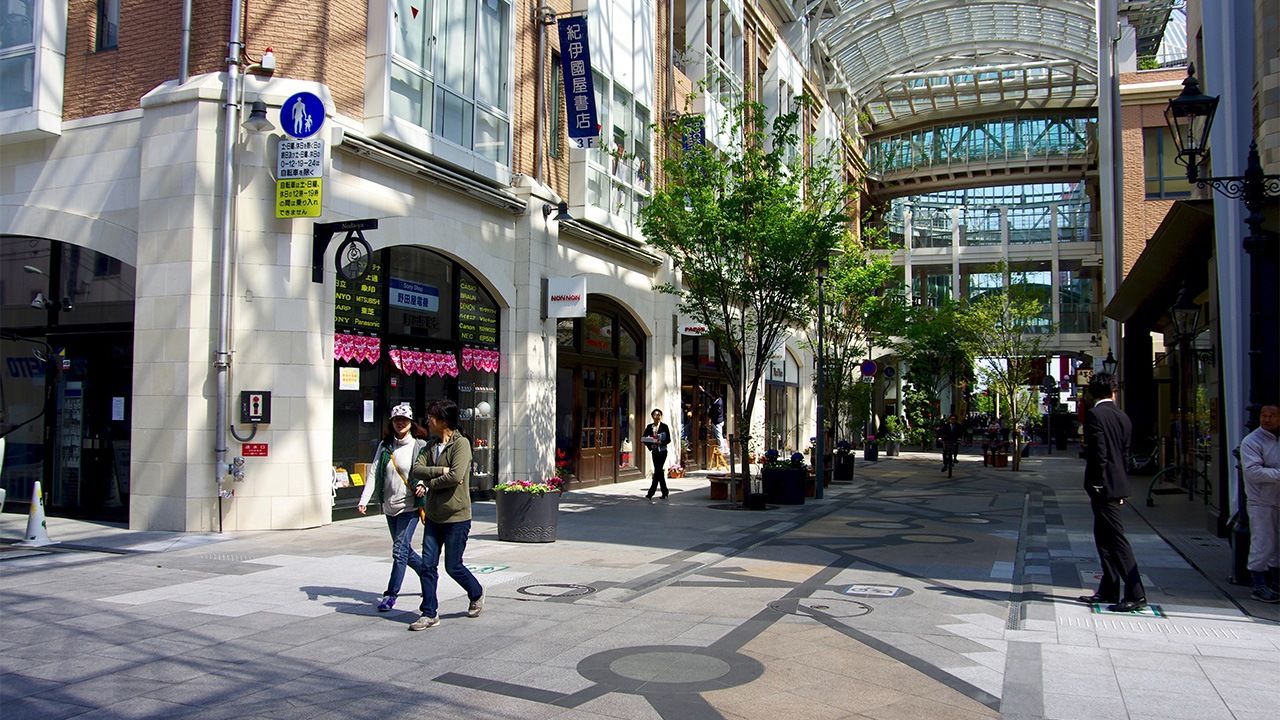
Bringing Life Back to Cities: Revitalizing a Takamatsu Shopping District
Economy Society- English
- 日本語
- 简体字
- 繁體字
- Français
- Español
- العربية
- Русский
Steady Decline in City-Center Shops
Once the shopping arcades in city centers across Japan bustled with visitors. Today, however, many of these shops have closed for good. In Japan such shopping streets are called “shuttered streets” for the metal shutters that close off their storefronts in perpetuity. Shuttered streets in provincial cities across the nation became noticeable in the late 1980s. In surveys of shopping districts conducted by the Small and Medium Enterprise Agency, some 40% of shopping districts in 1970 responded that they were “flourishing,” but by 1990 this had dropped to below 10%, and in 2000 the figure was only 2%.
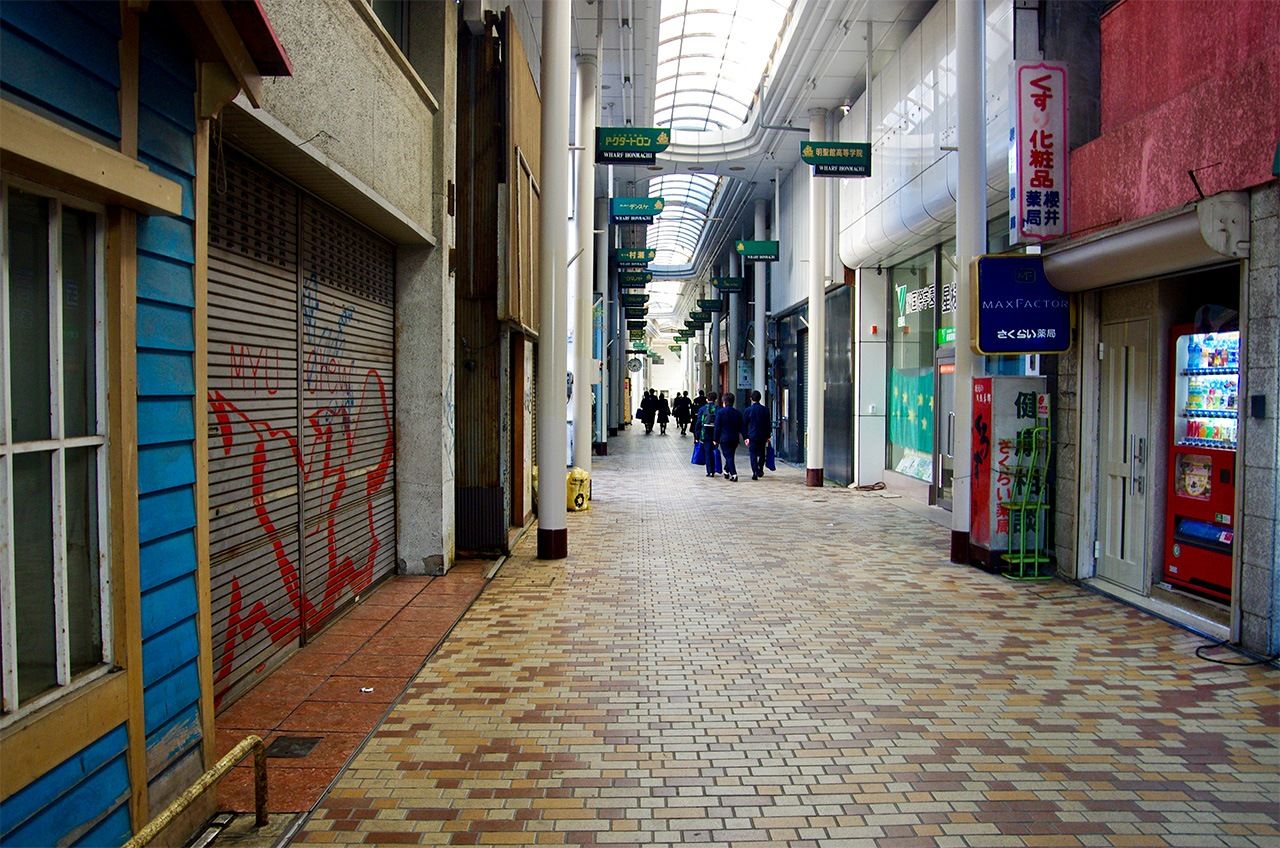
In provincial cities, “shuttered streets” where many of the shops have gone out of business are increasing.
Until 1990, the picture was one of “local shops vs. large stores.” In 1973, the Act on the Adjustment of Business Activities of Retail Business at Large-Scale Retail Stores, or Large Retailer Act, which placed restrictions on the opening of large stores, was enacted. But the effect of this law did not last long. While the number of shops increased continuously through the 1970s, peaking at 1.72 million in 1982, it thereafter reversed and began to decline. In 1991 there were 1.59 million shops.
Making matters even worse for traditional shopping areas was the easing of regulations in the Large Retailer Act as a result of the Japan-US Structural Impediments Initiative of 1991. The United States directed particular criticism at restrictions on large retailers as one of Japan’s nontariff barriers to freer trade. When these regulations were eased, shopping centers began appearing rapidly in suburban areas where these large-scale retailers could find sufficient land to build. The result was a decrease in shoppers in city-center shopping districts and a decline in not only local shopping streets, consisting of small shops, but even in urban shopping districts where department stores and other large retailers were located. This led to stagnation in store sales of large retailers in city centers.
These shopping hubs were once viewed as the faces of the urban communities they served, and their decline caught the eye of government. Revitalization became a key theme—the Large Retailer Act was repealed in 1998, area restrictions on large retailers in the suburbs were strengthened in city planning and other policies, and the Act on Improvement and Vitalization in City Centers was enacted to support motivated shopping districts. However, following disappointing results, in 2006 a new attempt was made to strengthen the system.
Even this did not halt the decline of most traditional shopping districts, and the government could not hide its frustration. Speaking about measures for city center revitalization at a House of Councillors Audit Committee meeting in April 2017, Minister of Economy, Trade, and Industry Sekō Hiroshige said, “I’d like to take another close look at this issue and conduct a thorough review, including whether there is a simpler, more uniform way of doing this, whether there is some more effective approach, or whether we are better off giving up.”
Is there any way to achieve success in revitalizing city centers? One example that bears examination is the shopping district of Marugamemachi in the city of Takamatsu, Kagawa Prefecture, where I was involved in a revitalization project.
Takamatsu’s Marugamemachi: A Success Story
The Marugamemachi Shopping District is a city-center area in Takamatsu, the seat of the Kagawa prefectural government. The traditional center of the community—a location on the main street that was once where official notices were posted, and has remained a bustling hub of activity since this was a castle town, centuries ago—has been remade into a square covered with a glass dome 25 meters across. The space is used for some of the liveliest events in the city.
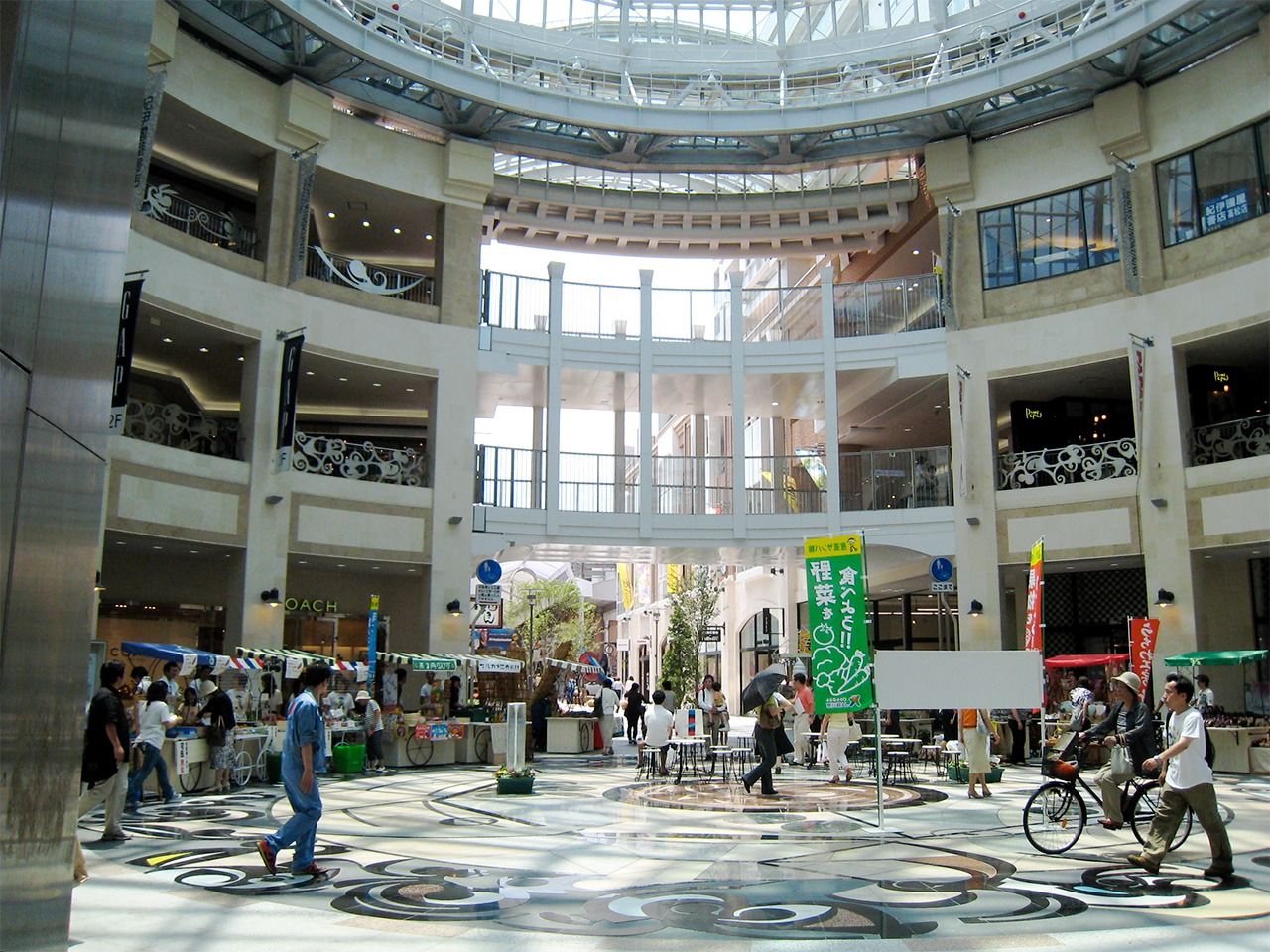
The glass-dome-covered square in Marugamemachi Shopping District is once again becoming a vital center for Takamatsu today.
The shopping district continues for 470 meters south from the square and consists of seven blocks, marked A through G. Blocks A to C and G have been largely redeveloped, with buildings on both sides of the shopping streets being jointly replaced as needed and covered with a glass arch above the third story. The height of the arcade covering is 22 meters, twice that of the previous roof.
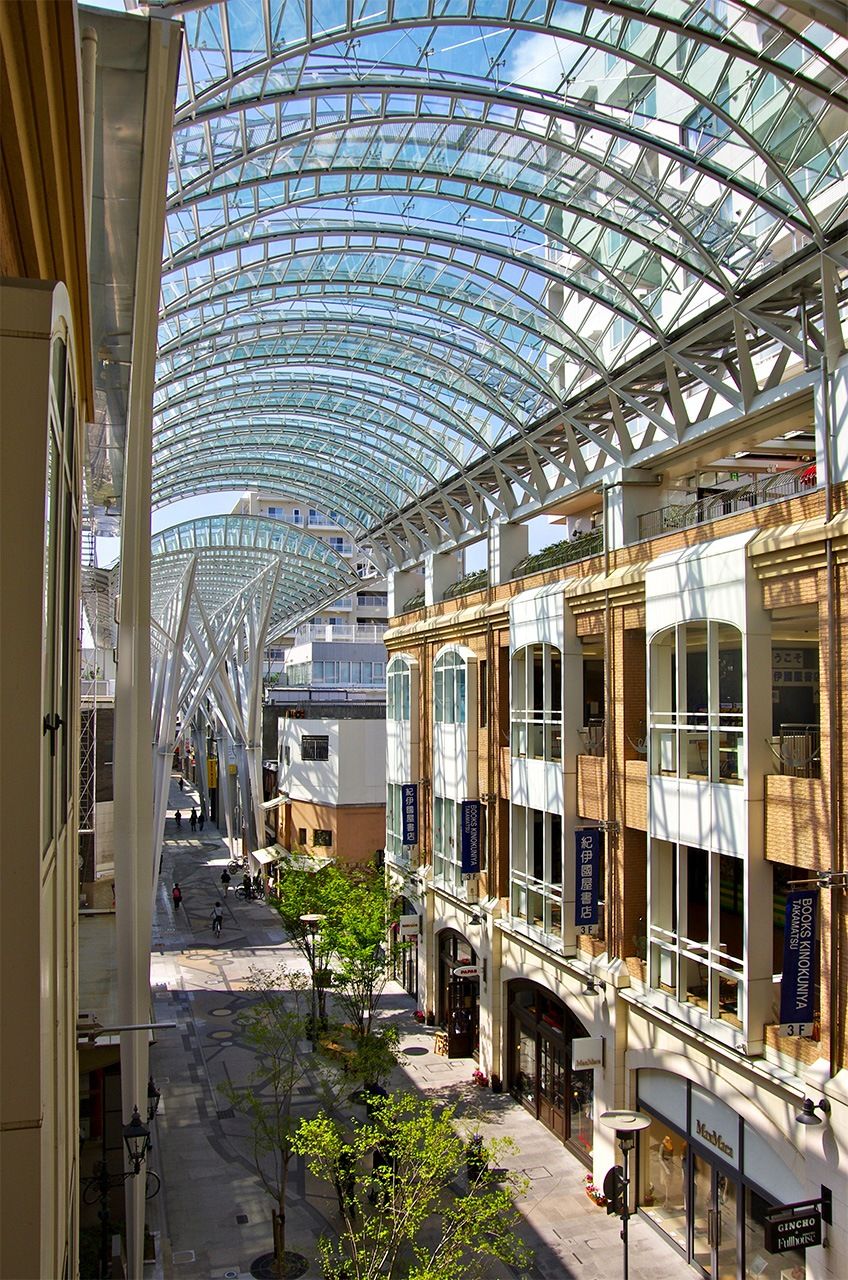
The district’s arcade provides a well-lit, wide-open space for shoppers and strollers.
There are sidewalks on both sides of the street with stairs or escalators up to the top floor, creating a pleasant, atrium-like space. Taking the escalator up to the second floor in Block C brings visitors to a green courtyard fronting “Machi no Shure 963,” a lifestyle shop with specialty foods and crafts of Shikoku, general merchandise, and more.
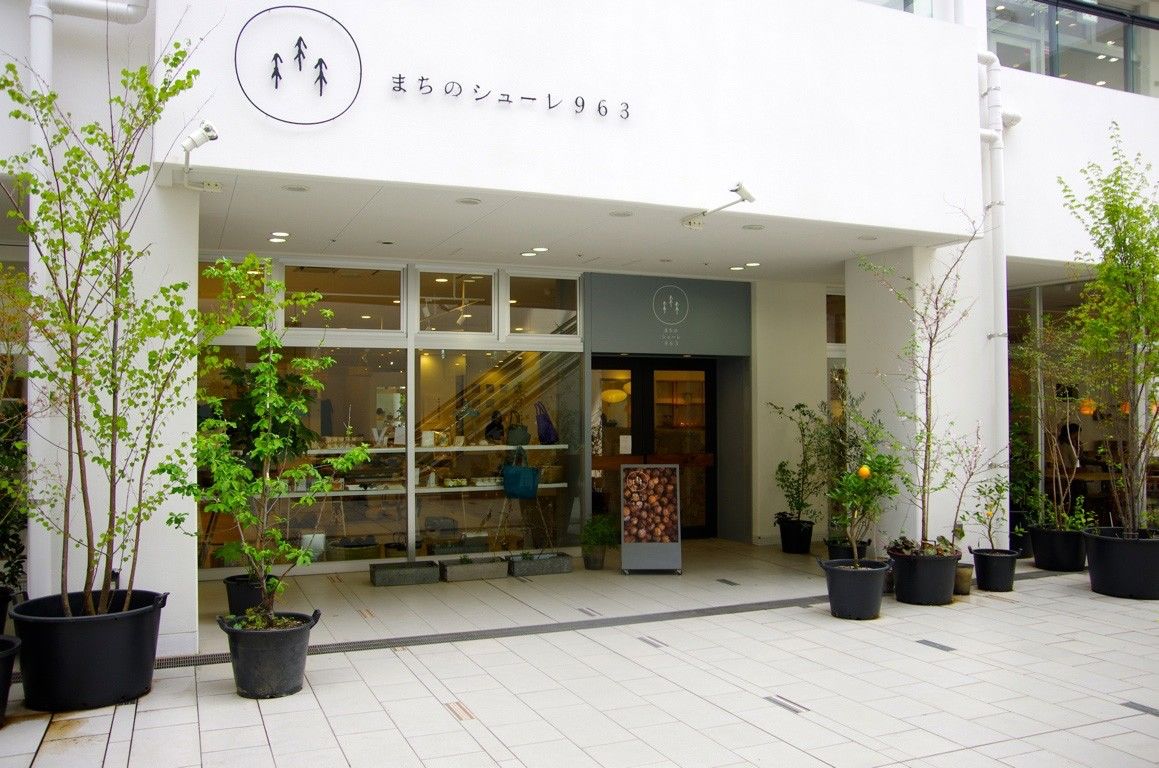
Entrance to Machi no Shure 963 in Takamatsu Marugamemachi Shopping District (photo by author)
Condominiums are being developed in the fourth and higher stories of structures in the shopping district. People who live here enjoy the advantage of living in the middle of the city, with the Mitsukoshi department store and other shopping destinations right out their front door. Another draw is the Marugamemachi Clinic, a cutting-edge medical facility offering advanced medical care and terminal care services at patients’ homes. Health, welfare, and medical services are a new sales point of the city center in Takamatsu.
This redevelopment has resulted in rejuvenation of the shopping district. The amount of traffic was 28,000 people per day in 1995, a figure that dropped all the way to 9,500 in the following years. Today it has recovered to 25,000. The district population has also increased from an astounding minimum of just 5 remaining residents to some 1,000 people (321 households) today. There are 157 shops in the shopping district, with a vacancy rate of zero.
Developing the Properties Without Impacting Ownership
The Takamatsu Marugamemachi Shopping District Promotion Association first felt the crisis of business flight to the suburbs and set out to redevelop the shopping district at the time of the community’s 400th anniversary in 1988. They began searching for ways to keep the shopping district going for the next century. After many ups and downs, the redevelopment project for Block A was completed in December 2006. After that the dome went up over the old town center, Block C was reconstructed, and the new arched roof covered the arcade. Block G was completed in 2012. The redevelopment work in Blocks D through F is currently in progress.
This redevelopment required collaborative construction of condominiums on land that had been subdivided into strips back when the area was a castle town. For this a mechanism was created to construct buildings jointly without affecting individual property ownership, and the landowners established a corporate structure for acquisition and operation. In this “community development company” scheme, the residents themselves are the developers, and companies have been launched to handle tasks from area management to joint ownership of buildings and restaurant and other business development.
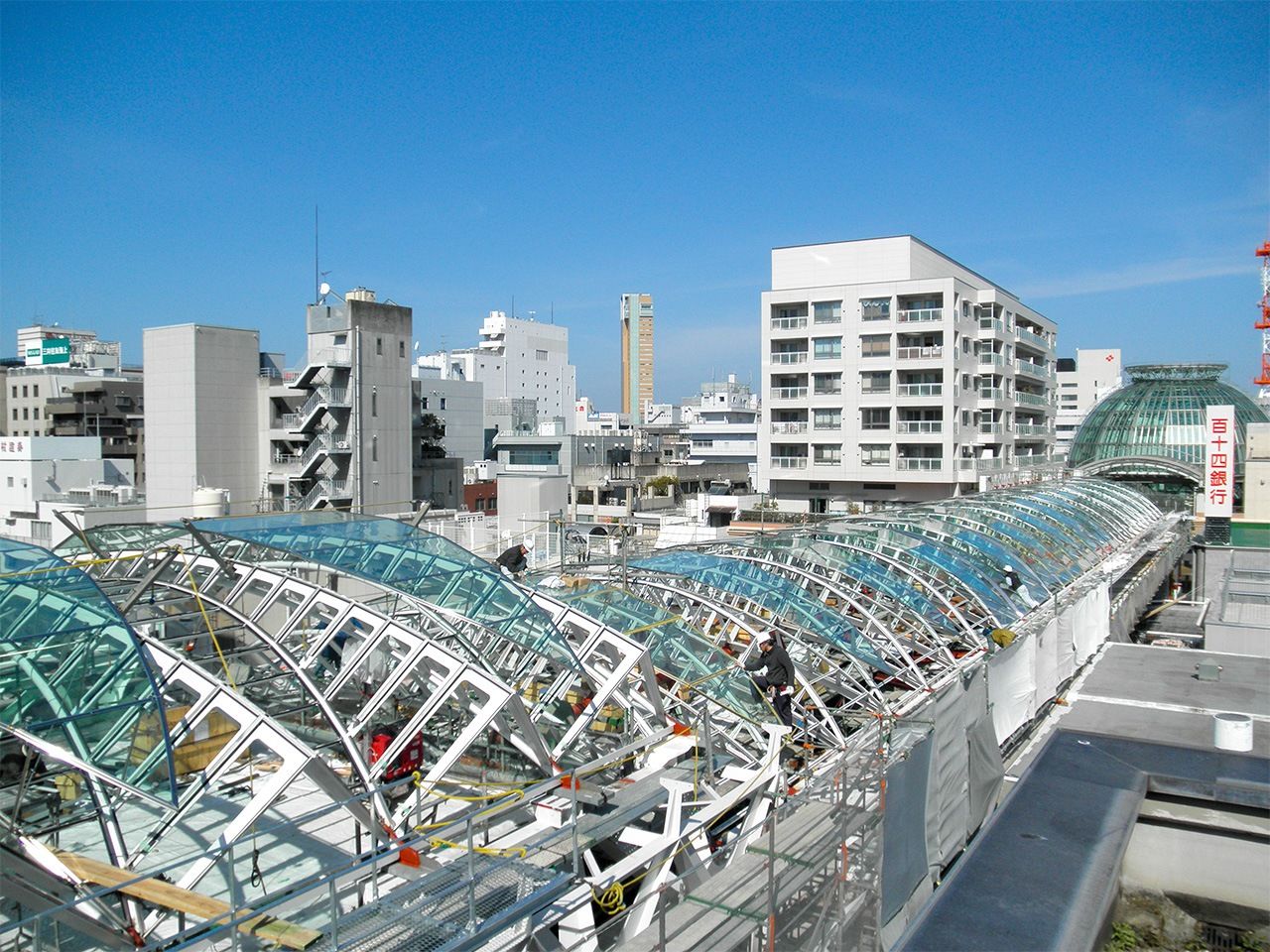
At right, above the arcade, stands a condominium jointly built by the Takamatsu Marugamemachi Shopping District Promotion Association without affecting land ownership.
This business scheme allows for the creation of generous public spaces like squares and courtyards, as well as upper-floor spaces on a scale allowing effective use. Reconstruction proceeded with the establishment of a design code that permitted creation of “tertiary places” where people in the shopping district gather and socialize. At the same time, efforts were made to produce businesses that preserve, encourage, and show the local lifestyle. New shopping locations along the arcade, as well as the medical clinic described above, are outcomes of that approach.
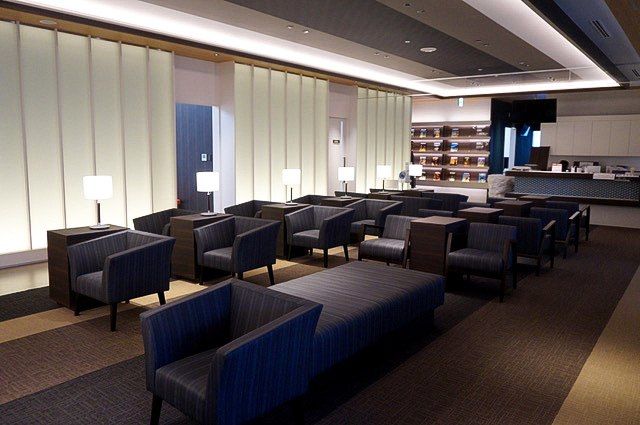
Marugamemachi Clinic, opened on the third floor in Block A of the Takamatsu Marugamemachi Shopping District. (Courtesy of the Takamatsu Marugamemachi Shopping District Promotion Association)
The Engines of City-Center Revitalization
What has become clear from the example of the Takamatsu Marugamemachi Shopping District is the importance of correctly combining the three aspects of design, business, and scheme. City-center revitalization strategies that combine these three aspects can be depicted as follows.
- They revitalize struggling city centers into pleasant, livable areas, making the best use of local characteristics.
- They enhance necessary public services, at the same time building industries rooted in the local lifestyle, such as “senary industries”—efforts by primary industries like agriculture, forestry, and fisheries to diversify and expand into food processing, distribution, marketing and other activities—thus driving the growth of local industry from within.
- Community development companies—developers rooted in the community, responsible for area management—are the engines of revitalization.
Large-scale, joint buildings like those seen today in the Takamatsu Marugamemachi Shopping District are not necessary in all cases. Depending on the size of the commercial area, renovation of existing buildings may be the best solution. Particularly in shopping districts that retain a historic atmosphere, it can be better to keep as many old buildings as possible. Revitalization projects combining renovations and joint buildings are underway in city centers in Ishinomaki, Miyagi Prefecture, which suffered damage in the Great East Japan Earthquake, and Nagahama, Shiga Prefecture, a pioneer in the creation of a community development company.
These city centers have become bridgeheads for area rebirth, places I call “creative towns.” For city revitalization, it is important that people with wide-ranging ideas come together in creative towns and produce sustainable growth with new industries that take advantage of local characteristics, including neighboring areas. City centers used to be thought of simply as areas of consumption, and there is a tendency to view the problem as “city center shopping districts versus large suburban retailers.” But it is more meaningful to move beyond that thinking and view city centers as places of innovation.
(Originally written in Japanese. Banner photo: Shopping arcade in the Takamatsu Marugamemachi Shopping District in Takamatsu, Kagawa Prefecture. All photos © Fukukawa Yūichi except where otherwise noted.)